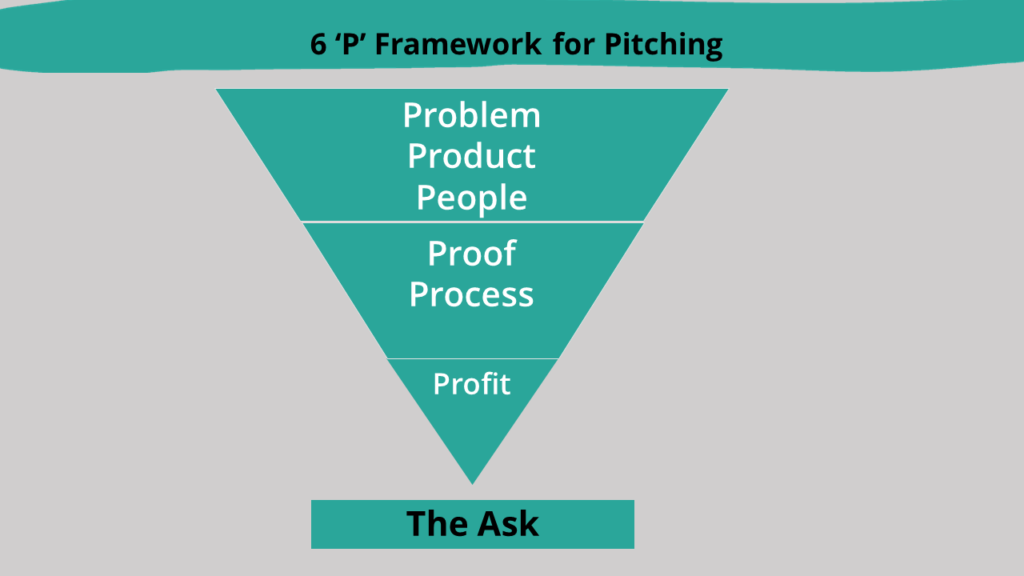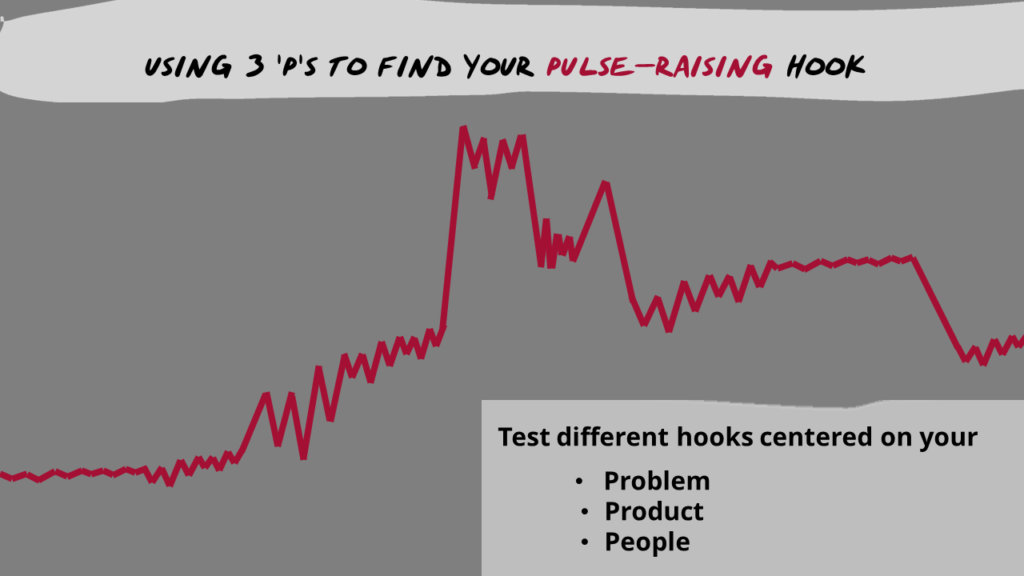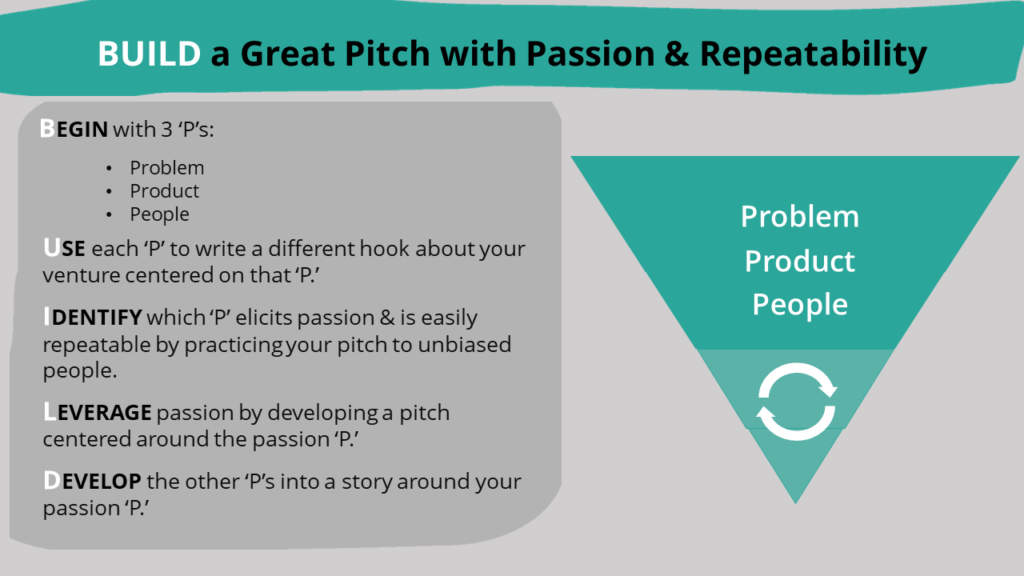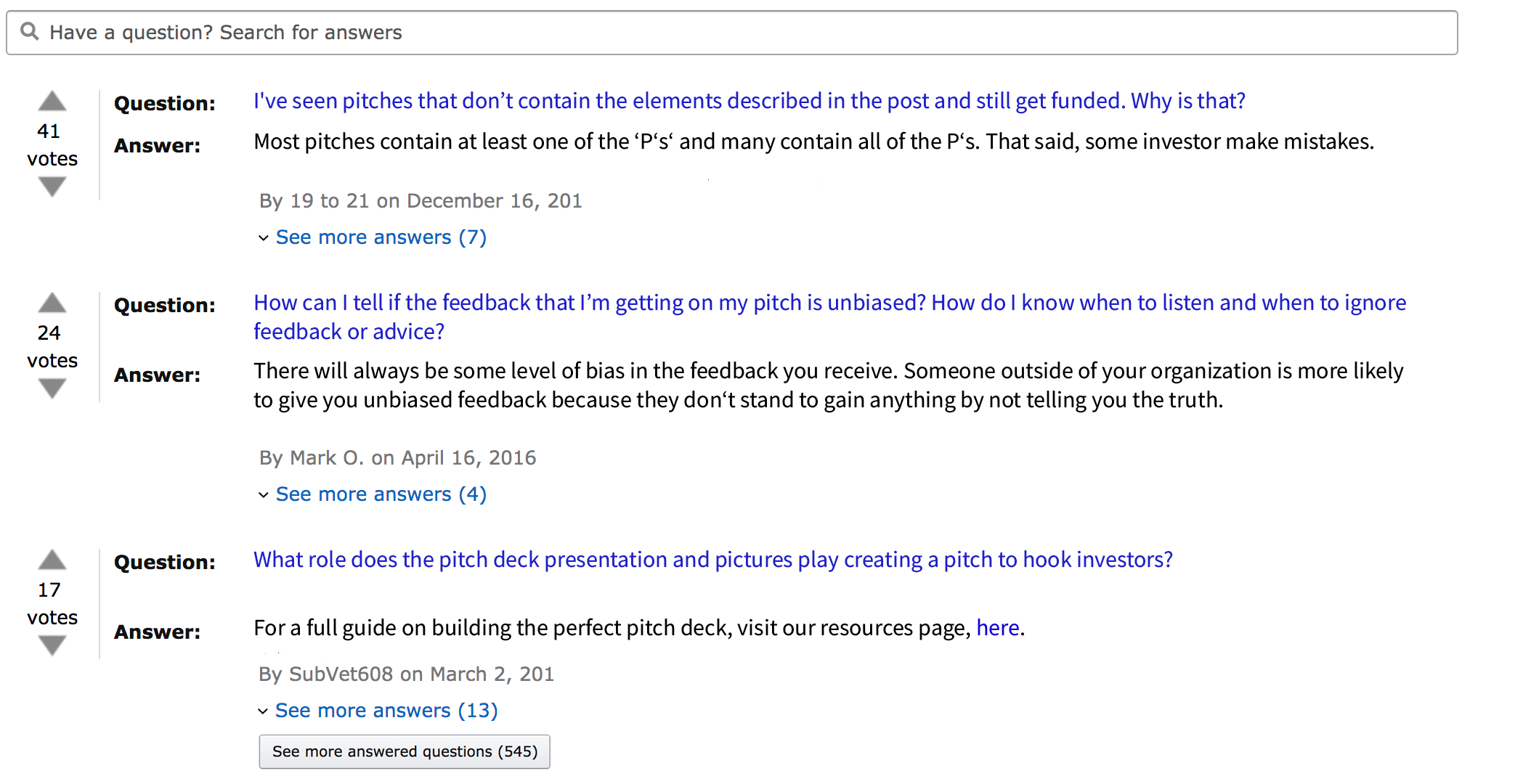How to Build a Great Pitch that Hooks Investors

It’s easy to find templates and checklists online to help you write a complete pitch. And learning techniques to frame your pitch around a story can turn a complete pitch into a good one. But most good pitches fail to raise venture capital.
What drives investors’ interest? How do VCs make decisions? How can you turn a good pitch into a great one that has investors eager to hear more about your startup?
What makes a pitch great?
We sat down with Shikhar Ghosh, a professor at Harvard Business School and angel investor who has advised hundreds of entrepreneurs. Before becoming a professor, Ghosh was a successful entrepreneur and savvy investor. Experiencing both perspectives of the fundraising journey gave him some unique insights on what makes a pitch great.
At a minimum, all good pitches thoughtfully address 6 core components all startups face in a compelling, cohesive way. Ghosh calls them the 6 ‘P’s and each builds strategically on the others, funneling into your ask.
6 Essential ‘P’s of a Pitch

Each of the 6 ‘P’s is unique to your startup and helps demonstrate its value to investors. They create a solid foundation for a good pitch. But that’s just a starting point.
2 Qualities All Great Pitches Share
- Passion. Your enthusiasm is genuine and infectious. Listeners walk away feeling moved and eager to participate in some way.
- Repeatability. Your core message and conviction can be easily conveyed by others.
A great pitch not only contains the 6 ‘P’s. It resonates with listeners on an emotional level within a minute. How do you know which ‘P’ to start with? By taking the time to work through each of the 6 ‘P’s, you’ll discover which evokes a passionate response from listeners and then build your hook around that element.
Applying the 6 ‘P’ framework helps you shape your pitch in a way that makes investors’ hearts beat a little faster. Following the framework and exercises can help you customize the framework to your venture and deliver and unforgettable, winning pitch.
Most startups find their most passionate point—what they can build their hook around—in the first 3 ‘P’s: Problem, Product, and People. This post focuses on those passion-inducing ‘P’s. Part 2 of this series on pitching, “How to Convince Investors to Make the Leap” teaches you how to use the practical ‘P’s—Proof, Process, and Profit—to support that emotion-evoking hook. Part 3, “The Ask,” guides you to succinctly articulate the amount of investment you’re raising and how you justify that figure. As a whole, the series can help you build confidence in your pitch.
- Passion – Most investors hear about a hundred pitches for everyone that they fund. When you pitch, you’re not just asking for money. You’re asking the investor to join you on a journey that will last 4 or 5 years. Your enthusiasm should be contagious, making them want to solve the problem with you and eager to share your idea with others on their team. What is it about your vision that can move people?
- Repeatability – The second crucial aspect to a great pitch is that the passion you conveyed must be easily repeatable by others. Investors typically aren’t acting alone. You may be pitching to someone who will summarize your pitch to other partners. Your core message needs to be easily shared in a way that triggers the emotions you provoked. Can someone repeat your core pitch in a way that makes others interested?
Ghosh observes, “your pitch is a combination of who you are, the way you feel about what you’re doing, and how others respond to the message.”
Identifying the most passion-provoking and repeatable elements of your business isn’t an intellectual exercise.
You have to practice creating new hooks using each of the ‘P’s and repeatedly practice delivering pitches to unbiased listeners.
Build Your Best Hook
A great pitch excites listeners enough to make their hearts beat faster. How would you frame your story and your excitement about the product you want to create in a way that generates an emotional response? Ghosh calls it a “Pulse-raising test.” Start by asking yourself: “Why do I care about this problem? What makes my pulse quicken or my heart rate go when I think about my business?” Brainstorm possible answers then take time to write 1 cohesive sentence–that will serve as your first hook to practice. Our free Pitch Pulse-Raising Test template can help structure this activity.
Pulse-raising test

Once you construct your first 1-minute hook, the only way to learn if your pitch conveys a passionate purpose and is repeatable is to test it. Find 2 or 3 unbiased colleagues—not family members or friends. Then, Ideally, find at least one peer who is also in the process of pitching and offer to critically assess their pitch in return. Pick people who can be objective and, ideally, aren’t involved in your business, and ask them to evaluate your hook using specific criteria. Our free Pulse-Raising Assessment Rubric can serve as a guide. Simply print it and ask them to complete it. Remember, direct and specific feedback is most helpful.
Once you’ve delivered your hook based on the ‘P’ you brainstormed, you want to develop a different hook using each of the first 3 Ps: Problem, Product, and People. Ghosh advises entrepreneurs, “Try to invoke emotion using each. Then practice pitching each hook to unbiased listeners.”

Problem ‘P’
When developing a hook centered on Problem, think about 3 things:
- What’s powerful or compelling about the problem you’re trying to solve?
Can you leverage a personal story—either from your experience or the experience of others—to demonstrate a compelling angle to your problem? - Do you have a unique solution to an existing problem that could excite investors?
- Does the problem you’re addressing have a larger sense of purpose?
Brainstorm answers to these questions. Then, write your answers into a short 1-2 sentence hook. You can download the questions and write answers on this free template. Then, print the assessment and ask an unbiased colleague to evaluate your pitch.
Product ‘P’
When focusing your hook around Product, consider the following:
- What’s different or special about your product from existing solutions? How can your product change things?
- Did something propel you to develop this product? Will it save lives?
- Do you have a unique solution to an existing problem that could excite investors?
For instance, Is your product—your solution to the problem—10x better than current solutions?
People ‘P’
When building a hook around People, incorporate these core points:
- What’s extraordinary about your team? Can you weave a personal story around their ability to build a product that leads your startup to success?
- What’s the track record of the team you’ve assembled? Do you have a co-founder who’s especially passionate and driven? Are other team members widely respected or affected by the problem you’re addressing?
- What are the core skills necessary to build the product? Does your team possess the core skills needed? If not, that’s okay but be sure to address how you’ll source these skills if your current team doesn’t have them already.
Once you deliver your hook to a couple of people, review their assessment sheets for similarities. How do people respond? Which one raises listeners’ pulse rates? Why? After you identify which P resonates with listeners, you can begin to build a pitch around that emotional hook that has the most strength.
Proof, Process & Profit
Most startups will find a passion point within the first 3 ‘P’s. But if you can’t find passion in these ‘P’s, move to the proof, or the process, or the profit.
For example, setting up a new kind of retail store to sell smoothies might not be really exciting to all investors.
- But if you have proof that says that 80% of the customers returned immediately, that could get really exciting.
- If you have a profit model that says that you’re making 80% gross margins, whereas most retail stores operate at 30% gross margins, investors get intrigued by why is this different, why is this actually happening.
- If this was true, then what would happen?
Testing Your Hook
Start with an unbiased observer and an unbiased listener. And for each of the different Ps, you give it your best shot of what is it that is really powerful about the product, or about the people, or about the problem that you’re trying to solve, and you try and build a foundation around that. As you go through this process, you’ll find that some messages resonate with certain audiences, and some messages feel really powerful to you, and each time you do it, you will start to hone the message better.
Your task is to take the P that’s most powerful in your message and amplify that.
Put It into Practice
The only way to develop a truly great pitch is to practice. Experiment creating hooks based on the ‘P’s to find which generates the best results. Practice delivering variations of your pitch rigorously. Then refine the hook, based on feedback, and practice again.
For many founders, practicing—especially with someone outside of your venture—can feel tedious or counterintuitive. Building a passionate and repeatable pitch to highlight your startup might feel like a waste of time. But to see truly impressive results when you pitch to investors, you need to do commit to doing reps of your pitch regularly—in front of unbiased people. Similar to testing with customers, be open to the feedback that emerges. Does anything surprise you? Can you see patterns?
Every time you revisit and critically assess your pitch’s hook, you gather invaluable information that helps you beyond raising money. You develop a deeper understanding of your motivations. That enables you to create a company culture that reflects your values and attracts outstanding employees and committed partners. Developing a habit of practicing and adapting your pitch now, with an unbiased audience, pays off as you scale.
Helpful Tools
- Pitch Pulse-Raising Test. This HBS-developed template includes questions to ask yourself and an assessment rubric to give those listening to you practice your hook.
- Assessing a Pitch’s Passion & Repeatability for Problem, Product, & People. These assessments were designed by HBS to help you structure you get the most useful feedback from your practice. Print and give the assessment to those listening to your practice pitches.
- How to Build a Great Pitch that Hooks Investors Workshop. Ready to go to the next step? SIgn up for a workshop in your area.
Summary
- Most startups identify passion in the first 3 ‘P’s: Problem, Product, People.
- To discover what really resonates with people, you need to make time to develop different hooks about your venture centered on each of those 3 ‘P’s.
- Practice delivering that hook to unbiased people.
- Once you identify what rouses emotion, write a pitch centered around the passion ‘P.’
- Build the other ‘P’s into a story around your passion ‘P.’
EXPLORE MORE
Your Questions & Answers


